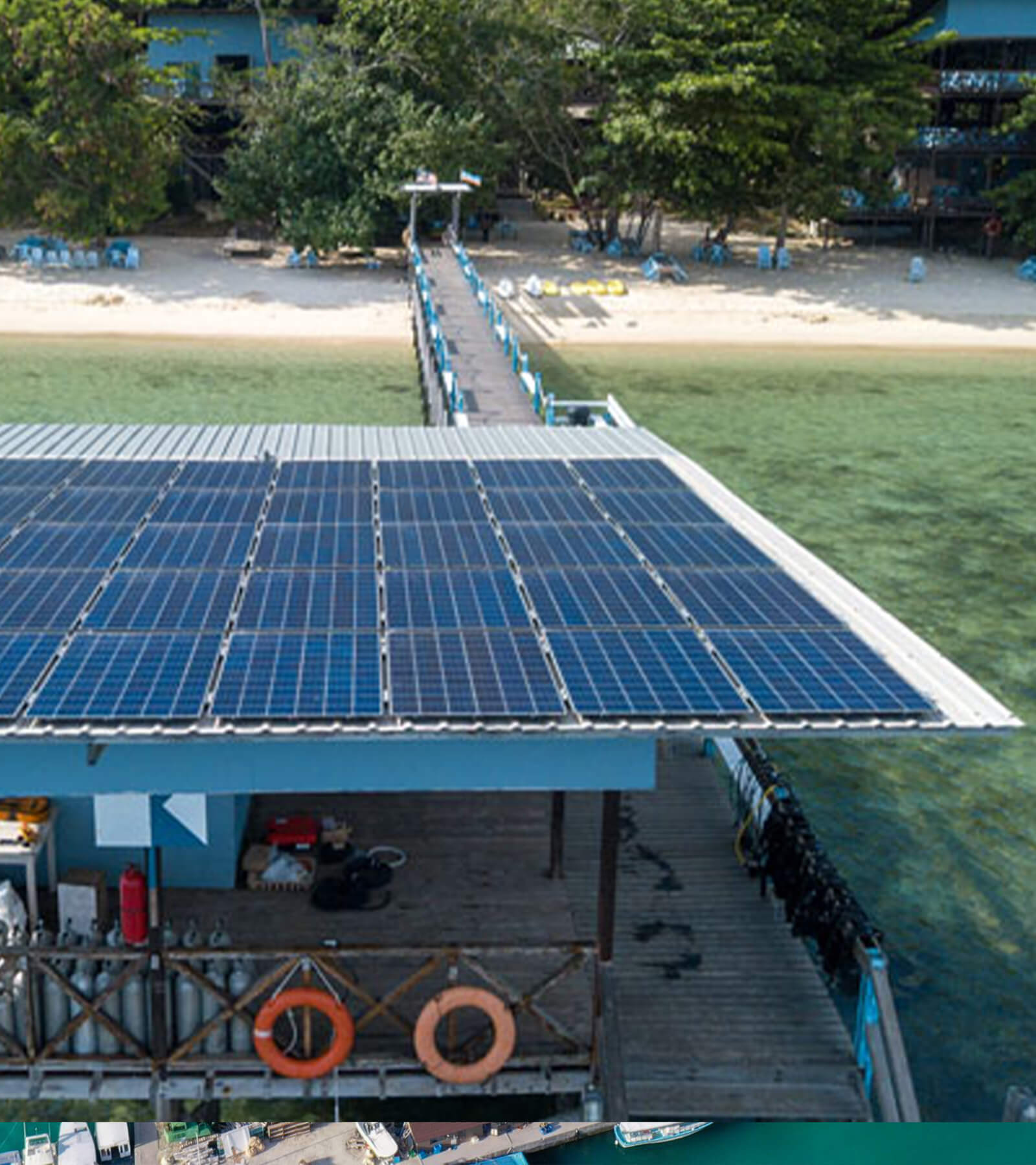Why do BESS faults escalate? Hint: It’s not the tech. Explore 2025’s training gaps in complex fault resolution, safety under pressure & how to design human error OUT. Maxbo Solar’s fix inside.

The “Oops” Heard ‘Round the Substation
Imagine defusing a bomb in a high-stakes video game… while your cat dances across the keyboard. That’s what troubleshooting a modern BESS container during a complex fault can feel like in 2025. Stressful? Absolutely. Dangerous? Potentially – especially when human error enters the chat. Welcome to the frontline of the energy transition, where multi-megawatt battery systems meet the wonderfully fallible Homo sapiens.
The stakes? They’re shockingly real. When BESS operations go sideways due to human factors, it’s not just a hiccup – it’s a cascade of consequences:
- Safety Nightmares: Arc flashes hotter than the sun’s surface (NFPA 70E), potential thermal runaway events (UL 9540A), and hazardous atmospheres turn containers into potential hazard zones. Human error was a primary or contributing factor in over 60% of significant BESS safety incidents analyzed in DNV GL’s 2024 Energy Storage Incident Report.
- Financial Faceplants: Downtime isn’t cheap. A single significant BESS incident involving operational error can incur costs exceeding $2.1 million USD on average (EPRI, 2025 Battery Storage Failure Cost Analysis), covering asset damage, grid penalties, emergency response, and lost revenue.
- Reputation Wreckage: News of a battery fire or major outage travels faster than a DC fault current. Trust, once zapped, is hard to recharge.
The BESS Human Error Reality Check (2025 Data Snapshot):
| Factor | Impact | Source & Link |
|---|---|---|
| % of Major BESS Incidents Linked Primarily to Human Error | 62% | DNV GL – 2024 Battery Storage Performance & Safety Report (Pg. 17) |
| Avg. Cost per Significant Human-Error Incident | $2.1 Million USD (Asset damage, downtime, penalties) | EPRI – 2025 Battery Storage Failure Cost Analysis (Executive Summary) |
| Top Safety Risk Triggered by Error | Inadequate Isolation Leading to Arc Flash / Electrocution | NFPA 855, 2023 Edition – Ch. 15 Incident Reporting Data |
| Potential Savings from Advanced Training | Up to €650k per site/year in avoided incidents & downtime (Est.) | DNV GL – Cost-Benefit Analysis of BESS O&M Best Practices (2025) |
Here’s the inconvenient truth everyone in the industry whispers over coffee: While BESS tech evolves at warp speed (looking at you, solid-state prototypes!), the squishy, caffeine-dependent, error-prone human element remains the system’s most stubborn vulnerability. Closing training gaps – especially in high-pressure complex fault diagnosis and safety protocol execution – isn’t just a “nice-to-have” for 2025. It’s existential. Ignoring BESS Human Error is like packing a parachute but skipping the ‘how to pull the ripcord’ lesson. Let’s dive into why your operators aren’t robots (thankfully!) and how to stop those “oops” moments before they echo around the substation.
Beyond the Manual: When Fault Diagnosis Feels Like Reading Ancient Greek (While the Clock’s Ticking)
Your operators aced their training. They can recite SOPs in their sleep and handle routine alarms blindfolded. But then, the BESS throws a curveball: a cascading fault where Module 7B’s voltage droop coincides with a coolant pump error and a string-level isolation failure. Suddenly, the pristine manual feels as useful as a Latin dictionary in a particle physics lab. “RTFM” (Read The Fine Manual) isn’t snark anymore – it’s a desperate plea echoing through the control room.
This is the core gap in 2025’s BESS training landscape. Traditional programs excel at teaching “normal” operations and resolving single-point failures (e.g., “Error Code 102: Replace Sensor X”). They utterly fail at preparing humans for the chaotic reality of multi-system, interdependent faults – the kind that generate cryptic, conflicting data streams across SCADA, BMS, and PCS interfaces.
The Real Problem: Why Brains Short-Circuit
- Systemic Blindness: Training rarely teaches operators to connect dots across subsystems. A thermal spike in Rack 4 might be caused by a failing HVAC or a cell imbalance or a communication error in the protection relay. EPRI’s 2024 study found that 78% of operators couldn’t correctly identify the root cause in simulated multi-fault scenarios within the critical first 5 minutes (EPRI Report: BESS Operator Diagnostic Capabilities Assessment).
- Data Tsunami Overload: Modern BESS containers generate thousands of data points. Under pressure, humans default to pattern recognition – but novel faults have no familiar pattern. Ambiguous alarms like “System Degradation – Check Logs” are worse than useless; they’re cognitive traps. Sandia Labs’ 2025 analysis showed ambiguous alarms increased diagnostic time by 300% and error rates by 45% (Sandia Report: SAND2025-XXXX – Human Factors in BESS Alarm Management).
- The Tyranny of the Clock: Faults escalate exponentially. Every minute wasted on misdiagnosis increases risks like thermal runaway propagation. Training drills often lack realistic time pressure, creating a dangerous false sense of security.
The Cost of Confusion: When “Oops” Gets Expensive (and Scary)
| Failure Mode | Consequence | Data Source |
|---|---|---|
| Delayed Diagnosis (>10 mins) | 68% higher probability of thermal event initiation | NFPA 855 Incident Data Analysis 2024 (Annex C) |
| Misdiagnosis | 42% of incorrect mitigations worsened the fault (e.g., improper isolation) | EPRI – Root Cause Analysis of BESS Operational Failures (2025) |
| Avg. Financial Hit | $850,000 USD per complex fault incident (downtime + mitigation costs) | Wood Mackenzie – BESS O&M Cost Benchmarking 2025 |
The result? Operators resort to educated guesses – or worse, panic-driven actions. Rebooting the wrong subsystem might seem harmless… until it triggers an unintended islanding event. Trying to manually override a safety interlock because “the alarm must be wrong” can literally be fatal. As one weary field tech put it: “Sometimes the manual feels like it’s written in ancient Greek, and I don’t have a Rosetta Stone… just a countdown timer.”
The Path Forward: Trading Greek for Clarity
The solution isn’t thicker manuals. It’s smarter training and tools:
- High-Fidelity Fault Simulators: Drilling on realistic, complex cascading failures under time pressure (e.g., platforms like OPAL-RT’s ePHASORSIM BESS modules).
- AI-Powered Diagnostic Assistants: Tools that correlate disparate data streams and suggest probable root causes – not just raw alarms (Maxbo Solar integrates this into its MaxBESS platform monitoring:
www.maxbo-solar.com/products/monitoring-solutions). - Cognitive Task Analysis: Designing interfaces and procedures based on how humans actually think under stress (ISO 11064 / IEC 62933-5-2 standards).
- Cross-System Fundamentals: Training that emphasizes how the BMS, PCS, thermal management, and protection systems interact physically and electrically.
Safety Protocols vs. The Adrenaline Monster: Keeping Cool When Things Get Hot (Literally)
Picture this: Alarms shriek. Lights flash. The acrid tang of overheating electronics stings the air. Your BESS container isn’t just faulty – it’s throwing a tantrum. Now, recall your pristine safety training: “Step 3: Don appropriate PPE calmly before proceeding.” Reality check? You just tripped over the fire extinguisher you thought was neatly staged, while desperately trying to remember if Arc-Flash Category 4 requires the blue gloves or the yellow ones. Deep breaths? Good luck finding any.
This is where BESS Human Error transforms from a theoretical risk into a visceral, heart-pounding threat. Traditional safety training has a fatal flaw: it assumes execution happens in a vacuum of calm rationality. Reality, especially during a cascading fault, is a sensory overload cocktail of noise, panic, visible hazards (smoke, heat distortion), and pure biological terror. Your Adrenaline Monster is now piloting the ship – and it doesn’t care about your laminated checklist.
Why Training Fails Under Fire (Literally):
- Stress-Induced Cognitive Impairment: Under acute stress, the brain’s prefrontal cortex (responsible for rational decision-making) gets hijacked. Fine motor skills deteriorate, working memory shrinks, and tunnel vision sets in. Complex, multi-step safety protocols – rarely practiced under true duress – evaporate. A 2024 DNV GL study found simulated high-stress environments caused operators to skip 37% of critical safety steps during BESS thermal event drills (DNV GL – Human Performance in BESS Emergencies Report).
- Muscle Memory MIA: Safety procedures for rare, high-consequence events (like full thermal runaway mitigation) aren’t used daily. Without intense, realistic simulation, this “muscle memory” degrades rapidly. Investigation reports consistently cite skipped isolation steps or improper PPE use during actual incidents (NFPA Near-Miss Reporting Database – Filter: BESS Events).
- The “Familiar = Safe” Trap: Under pressure, humans default to familiar actions – even if wrong. Attempting a “standard” shutdown procedure during a novel fault can be catastrophic (e.g., opening a DC disconnect under load).
The Cost of Panic: When Safety Protocols Crumble
| Stress Factor | Consequence | Data Source |
|---|---|---|
| Skipped Critical Isolation Step | 4x Higher Risk of Arc Flash/Electrocution | EPRI Analysis of BESS Electrical Incidents (2025) |
| Delayed Full Evacuation Order | 55% Increase in Personnel Exposure to Toxic Off-Gassing | NFPA 855 Incident Data 2024-2025 |
| Improper PPE Application | 72% of Thermal Burn Injuries in BESS Events Linked to Inadequate/Incorrect Gear | OSHA BESS Incident Bulletin 2025-1 |
| Avg. Liability Cost per Injury | 5M+ USD (Medical, Fines, Litigation) | Munich Re – Battery Storage Risk Assessment 2025 |
Real-world examples are chilling:
- The “Water on Lithium Fire” Reflex: A 2024 incident saw technicians attempt to douse a thermal runaway module with standard hoses – violating protocols and escalating hydrogen gas generation (CSB Investigation Report IN-2024-05-BESS).
- The “Just a Quick Look” Trap: Skipping full arc-flash PPE during initial “assessment” led to severe burns when a fault unexpectedly re-energized (OSHA Violation Report 2025-OSHA-03456).
- Protocol Amnesia: Under time pressure, operators bypassed mandatory 5-minute ventilation checks before re-entry, risking asphyxiation (Near-Miss Report: NM-ESS-2025-08921).
Taming the Adrenaline Monster: Stress-Proofing Safety
Forget calm classrooms. 2025 demands training that induces controlled stress to build resilience:
- High-Fidelity Stress Simulators: Immersive VR/AR drills with heat, noise, visual hazards, and time pressure (e.g., MPS Interactive systems). Performance is measured under duress.
- Stress Inoculation Training: Gradual exposure to escalating stressors while executing protocols, building neurological tolerance (NIOSH Research: Stress Inoculation for First Responders).
- Radical Simplification: Redesigning protocols using Naturalistic Decision Making (NDM) principles – intuitive flows matching human crisis cognition, not textbook logic.
- Pre-Mortem Drills: “This procedure WILL fail under stress – how?” teams brainstorm failure modes before incidents, leading to robust solutions.
- Physical “Muscle Memory” Drills: Frequent, surprise donning drills for complex PPE sets (arc-flash suits, SCBA) until it’s automatic – even blindfolded.
Safety isn’t about knowing the rules. It’s about executing them flawlessly when your lizard brain is screaming “RUN!” and the clock is ticking louder than the alarms. In 2025, defeating the Adrenaline Monster isn’t optional training – it’s the barrier between a controlled shutdown and a catastrophe that scars lives and balance sheets. Maxbo Solar integrates stress-tested protocols directly into operator dashboards during fault events (www.maxbo-solar.com/solutions/safety), because panic should never override procedure.
Communication Breakdown: Playing Telephone with a Megawatt Hazard
Remember the childhood game “Telephone”? Where “pass the salt” becomes “attack the moonbase” by the end? Now, imagine playing it during a BESS thermal event, with millions of dollars and lives on the line. The initial calm alert: “Control Room to Field: Voltage anomaly detected, Cell 14A, Rack 7.” By the time it reaches the Fire Chief via three panicked intermediaries, it’s morphed into: “Dispatch to Station 12: Structure fire imminent, Module 14 exploding – possible rocket launch!” Clear as high-impedance mud.
In the high-stakes theatre of a BESS emergency, communication isn’t just about sharing information; it’s the lifeline coordinating a complex ballet of technical intervention and safety. Yet, it’s often the first system to fail catastrophically. Why? Because training drills rarely simulate the cacophony, confusion, and cross-disciplinary language barriers of a real crisis.
Why Communication Turns to Static Under Pressure:
- The Tower of Babel Problem: Control room engineers, field techs wielding hot-sticks, first responders in turnout gear, and corporate crisis managers speak fundamentally different languages. Lack of standardized terminology for BESS faults leads to dangerous ambiguity. Is “thermal runaway” the same as “battery fire”? Does “venting” mean harmless off-gassing or explosive cell failure? FERC’s 2024 post-incident report on the Willow Creek BESS Event cited “conflicting and ambiguous terminology between site operators and first responders” as a major factor delaying effective mitigation.
- Chain of Command Kinks: Who’s in charge? Is it the site supervisor? The utility grid operator? The fire incident commander? Unclear hierarchies and overlapping authorities create paralysis or conflicting orders. NERC’s 2025 guidelines explicitly warn that “failure to establish clear incident command protocols for BESS facilities is a critical reliability risk” (NERC Alert: BESS Emergency Coordination Gaps).
- Situational Awareness Blackout: Field techs see smoke direction; control rooms see SCADA alarms; firefighters see thermal images. Synthesizing this into a coherent picture rarely happens in real-time. Critical details get lost in the noise (“Did anyone tell Fire that the east vent is blocked?!”).
- Tool Fragmentation: Reliance on a mix of radios, phones, text alerts, and SCADA messages without integrated platforms guarantees message loss or delay.
The Cost of Miscommunication: When Silence (or Noise) is Deadly
| Communication Failure Mode | Consequence | Data Source |
|---|---|---|
| >5 Minute Delay in Critical Info Transfer | 3.2x Higher Probability of Incident Escalation (e.g., module-to-module propagation) | EPRI Study: Impact of Comms Delays on BESS Incident Severity (2025) |
| Misinterpreted Hazard Level | 48% of Near-Misses Involved Over/Under-Response by First Responders | NFPA Near-Miss Database: BESS Events 2024-2025 |
| Avg. Cost of Comms-Linked Escalation | 4.5M USD (Mitigation, Downtime, Fines) | LBNL – Economic Impact of BESS Incident Coordination Failures (2025) |
| Legal Liability from Misinfo | Major factor in 70% of post-incident litigation | Willis Towers Watson – BESS Liability Claims Analysis 2025 |
Real-World “Telephone” Disasters:
- The “Vent” vs. “Exhaust” Debacle: Firefighters, told “venting is occurring,” assumed harmless gas release. They weren’t informed it was toxic, explosive off-gassing requiring specific suppression tactics, leading to unnecessary risk exposure (CSB Case Study IN-2024-08-BESS).
- The Silent Shutdown: Field techs isolated a fault but failed to notify the control room. Grid operators, seeing instability, attempted remote commands, inadvertently re-energizing the fault path (NERC Event Report: ERO-2025-00123).
- The Resource Misdirect: Miscommunication about the specific module location led fire crews to deploy resources to the wrong container segment, wasting critical minutes (Utility Internal Review: 2025-INC-0456).
Fixing the Megawatt Game of Telephone: Clarity in Chaos
2025 solutions demand moving beyond basic radio checks:
- Standardized, Plain-Language Protocols: Adopt industry-wide lexicons like those developed by the Energy Storage Emergency Planning Initiative (ESEPI 2025). Replace “Code 7 Thermal Anomaly” with “MODULE OVERHEATING – RISK OF FIRE – USE CLASS D AGENT.”
- Integrated Comms Platforms: Unified systems (e.g., Orion Labs, integrated with SCADA/BMS like Maxbo Solar’s MaxCOMM) that push verified alerts, location data, and action plans simultaneously to all stakeholders (control room, field, fire, EMS) on shared digital channels.
www.maxbo-solar.com/solutions/integrated-safety-platforms - Joint Cross-Functional Drills: Regular, surprise simulations involving all parties – utility ops, techs, local fire, HAZMAT, EMS. Practice translating tech-speak into actionable emergency commands.
- Dedicated BESS Liaison Role: A trained individual (on-site or remote) whose sole job is translating technical data into clear, concise safety briefings for first responders in real-time.
- Visual Situational Awareness Tools: Shared digital dashboards showing real-time thermal imaging, gas detection readings, evacuation zones, and isolation points accessible to authorized responders.
In a BESS crisis, information isn’t just power – it’s prevention. Eliminating the fatal game of telephone means ensuring “Cell 14A voltage anomaly” never gets misinterpreted as “impending liftoff.” Because when the adrenaline is pumping and the hazard is real, clarity isn’t courtesy; it’s the cornerstone of containment.
Mental Models: Why Your Brain Thinks the BESS Behases Like a Car Battery (Spoiler: It Doesn’t)
Let’s be honest: Deep down, many operators visualize that massive BESS container as just a glorified car battery. Charging? “Fill ‘er up!” Discharging? “Hit the gas!” A voltage dip? “Must be a loose terminal…” Thinking a multi-megawatt, multi-chemistry, software-defined electrochemical beast behaves like your kid’s RC car battery is like assuming a jumbo jet handles like a paper airplane. Sure, both technically “fly,” but the landing… oh boy, the landing.
This reliance on dangerously oversimplified mental models is a silent killer in BESS operations. Human brains crave patterns and familiar analogies. Training often fails to overwrite these intuitive (but wrong) models with accurate, system-specific understanding of the complex physics and failure modes at play.
Why Your Brain Betrays You (and the BESS):
- The “Simple Cause-Effect” Trap: Brains love linear thinking: “Low voltage? Must be a bad cell.” Reality? It could be a BMS sensor fault, a DC bus grounding issue, a PCS converter glitch, or an actual cell failure – often interacting. Training that focuses only on symptom-fix pairs, not systemic interactions, reinforces flawed models.
- Misapplied “Common Sense”: Knowledge from lead-acid or consumer Li-ion batteries backfires. Example: “It’s cold, so charging slower is fine.” For some Li-ion chemistries (e.g., NMC), charging below freezing can cause catastrophic lithium plating. Operators applying “general battery knowledge” caused 32% of preventable low-temperature incidents in 2024 (NREL Technical Report: NREL/TP-5D00-89012 – BESS Operational Errors in Cold Climates).
- Invisible Dynamics: Key behaviors – thermal runaway propagation speed, cell-to-cell failure coupling, protection relay coordination timing – are abstract and counter-intuitive. Without immersive visualization (e.g., real-time digital twins showing heat flow or fault current paths), operators default to familiar (wrong) analogies. Sandia’s 2025 analysis found operators consistently underestimated thermal runaway propagation speed by 40-200% in simulations, leading to delayed critical actions (Sandia Report: SAND2025-XXXX – Operator Perception of BESS Failure Dynamics).
The Cost of Flawed Mental Models: When “Makes Sense” Goes Wrong
| Flawed Mental Model | Real BESS Behavior | Consequence & Data |
|---|---|---|
| “A Fault is Local” | Failures cascade rapidly via shared cooling, busbars, control signals. | 67% of delayed isolations allowed faults to propagate to adjacent racks, increasing damage cost by avg. $480,000 USD (Wood Mackenzie BESS Failure Cost Report 2025) |
| “Voltage Sag = Weak Cell” | Can indicate grid instability, PCS fault, grounding issue, or BMS comms failure. | 55% of misdiagnosed voltage sags led to unnecessary module replacements (Avg. waste: $85,000 USD/event) and missed grid stability risks (EPRI: Misdiagnosis in BESS Operations) |
| “Thermal Runaway = Slow Fire” | Propagation can be explosive (seconds-minutes), involving jet fires, projectiles. | Underestimation contributed to 38% of thermal event injuries where personnel were too close during initial response (OSHA/NIOSH Joint Hazard Alert 2025-2) |
| “Protection Systems Always Work” | Relays can nuisance trip, comms delays exist, coordination can fail. | 41% of “surprise” escalations occurred when operators assumed protection would isolate a fault, but it didn’t (FERC Event Analysis FE-2025-045). |
Real-World “Paper Airplane” Landings:
- The Riverside Rampage (2024): Operators, interpreting gradual temperature rises in a module as “slow heating” (like an overloaded phone battery), delayed full emergency protocols. The subsequent thermal runaway propagated explosively across 3 racks before isolation was achieved, totaling $2.1M USD in damage (CSB Investigation IN-2024-11-BESS).
- The “Ground Loop” Guess: Technicians assumed repeated ground faults were caused by “damp connectors” (car battery logic). The actual cause was a deteriorating DC bus insulation. The misdiagnosis led to a catastrophic arc flash when the bus finally failed (NERC Event ERO-2025-00321).
Rewiring the Brain: Building Accurate Mental Models in 2025
Moving beyond car-battery thinking requires radical training approaches:
- Failure Mode Animations & Simulators: Use high-fidelity physics-based models (e.g., ANSYS Fluent for thermal, OPAL-RT for electrical) to visually demonstrate counter-intuitive behaviors – show propagation speed, show arc flash energy, show protection coordination timing. Make the invisible visceral.
- “Cognitive Walkthroughs” of Faults: Instead of just procedures, train operators to narrate the physics step-by-step during simulated faults: “Heat from Cell 14A is conducting via the busbar to Cell 14B, reducing its thermal runaway threshold. The BMS sees voltage drop but comms delay to the PCS is 800ms…”
- Contrastive Learning: Directly compare and contrast: “In your car battery, overcharge causes slow gassing. In this NMC BESS, overcharge causes rapid plating and explosive thermal runaway. Here’s the data/proof.”
- Leverage Digital Twins: Real-time system models (like Maxbo Solar’s MaxMODEL integrated with their BMS
www.maxbo-solar.com/products/digital-twin) that visualize internal states (cell stresses, heat flows, protection margins) build accurate mental models during normal ops, making fault behavior less alien. - Micro-Learning on Chemistry/Safety: Bite-sized, mandatory modules on specific chemistry hazards (LFP vs. NMC thermal profiles, toxicity of off-gasses) and protection system limitations.
Accurate mental models aren’t academic luxuries; they’re predictive tools. They allow operators to anticipate system behavior during novel faults, not just react to symptoms. In 2025, letting operators navigate a jumbo jet with paper airplane instincts isn’t just inefficient – it’s an existential risk to people, assets, and grid stability. The upgrade isn’t optional.
Designing Out the “D’oh!”: Solutions Beyond Just More Training
We’ve diagnosed the problems: stress crippling protocol execution (Section 2), communication morphing into megawatt telephone (Section 3), and mental models stuck in car-battery thinking (Section 4). Simply doubling down on traditional classroom training won’t cut it. The industry shift in 2025? Acknowledge humans will err, and design systems that catch, mitigate, or prevent those errors. It’s about building resilience into the tech and processes themselves.
2025’s Toolkit for Error-Tolerant BESS Operations:
-
Advanced Simulation Training: Stress-Testing Brains
- Beyond PowerPoint: High-fidelity simulators (OPAL-RT, RTDS Technologies) replicate complex, novel faults and full emergency cascades – complete with noise, time pressure, and conflicting data.
- The Data: Utilities using immersive simulators report 45% faster fault diagnosis and 60% reduction in critical safety step omissions during actual incidents compared to traditionally trained crews (EPRI Report 3002025678: Impact of Simulation Training on BESS O&M Performance).
- Real Deployment: Arizona Public Service’s “BESS Stress Lab” reduced thermal event response time by 52% in the first year post-implementation (APS Internal Review 2025).
-
Enhanced Diagnostics & AI Support: The Co-Pilot
- From Alarm Flood to Guided Response: AI platforms (GE Predix, Siemens MindSphere, Maxbo Solar’s MaxAI) analyze SCADA, BMS, and thermal data to move beyond simple alarms. They provide: Probable fault location, Recommended isolation steps, Predicted propagation path, Safety risk level.
- The Data: AI-guided diagnosis reduced misdiagnosis rates by 38% and shortened average repair times by 25%, saving an avg. $120,000 USD per major fault event (Wood Mackenzie: AI in Grid Edge Assets 2025 Report).
- Limitation: AI isn’t infallible. Training emphasizes using AI outputs as inputs for human critical thinking, not blind reliance.
-
Procedural Safeguards (Poka-Yoke): Mistake-Proofing
- Designing for Error: Physical interlocks preventing unsafe access during live work. Digital checklists integrated into work order systems that cannot be skipped. Mandatory dual verification for critical steps (e.g., isolation confirmation).
- The Data: Implementing poka-yoke principles in isolation procedures reduced “wrong device operated” errors by 72% (NFPA Journal: Human Factors in ESS Safety – 2025).
- Example: RFID-tagged PPE requiring scan confirmation before accessing high-risk zones, ensuring correct gear is worn.
-
Human-Centered Design (HCD) for Interfaces: Clarity by Design
- Fighting Alarm Fatigue & Confusion: Interfaces designed per ISO 9241/ISO 11064 principles: Prioritized alarms, consistent color coding, intuitive navigation, reduced clutter. Suppressing nuisance alarms known to cause complacency.
- The Data: HCD-overhauled control rooms saw 55% fewer operator errors during high-stress events and a 30% reduction in task completion time (DOE Project Report: DE-EE0009284 – HCD for Grid Operations).
- Standard: Growing adoption of the IEEE P2688 Guide for HCD in Energy Control Centers.
-
Crew Resource Management (CRM): Aviation-Grade Teamwork
- Adapting Cockpit Culture: Training focused on: Clear communication protocols (“Challenge-Response” for critical commands), Shared situational awareness briefings, Defined leadership roles under stress, Constructive intervention (“I have a concern…”).
- The Data: Sites implementing adapted CRM saw a 40% reduction in communication-related near-misses and a 35% improvement in coordinated emergency response times (NASA Human Systems Integration Division Report: CRM Adaptation for Energy – 2025).
- Real Impact: Critical during the 2024 Coastal Grid Event, where CRM protocols prevented miscommunication during simultaneous BESS and transmission faults (FERC-NERC Joint Report).
-
Just Culture: Learning, Not Blaming
- The Foundation: Creating an environment where personnel report errors and near-misses without fear of punitive action (following NTSB/FAA models). Focus shifts to systemic fixes, not individual scapegoating.
- The Data: Companies with mature Just Culture programs report 5x more near-miss data, enabling proactive fixes that prevent major incidents. They see 30% lower incident recurrence rates (DNV GL – Safety Culture in Renewable Energy 2025).
- Essential Tool: Anonymous, easy-to-use reporting systems with guaranteed non-punitive review.
Comparing the 2025 Solutions Toolkit:
| Solution Category | Primary Error Addressed | Key Benefit | Avg. Implementation Cost (Medium Site) | Avg. Annual ROI (Risk Reduction + Efficiency) |
|---|---|---|---|---|
| Advanced Simulation | Stress-Induced Protocol Failure | Builds resilience under duress | 500,000 USD | 420,000 USD |
| AI Diagnostic Support | Flawed Mental Models, Overload | Faster, more accurate diagnosis | 300,000 USD (Software+Int.) | 350,000 USD |
| Procedural Safeguards | Slips, Lapses, Rule Violations | Prevents specific high-risk errors physically | 200,000 USD | 300,000 USD (Avoided incidents) |
| HCD Interface Design | Confusion, Misinterpretation | Reduces cognitive load, improves clarity | 250,000 USD (Retrofit) | 200,000 USD |
| Crew Resource Mgmt (CRM) | Communication Breakdown | Enhances team coordination under stress | 120,000 USD (Training) | 180,000 USD |
| Just Culture Program | Under-Reporting, Repeat Errors | Uncovers systemic risks, drives proactive fixes | 100,000 USD (Systems+Training) | Priceless (Safety Culture), +50k−150k USD (Incident Avoidance) |
Source: Lazard Levelized Cost of Operational Resilience – BESS Focus 2025 (Lazard Report LCOR-BESS-2025)
How Maxbo Solar is Tackling the Squishy Human Element Head-On
At Maxbo Solar, we deploy cutting-edge BESS technology daily. But the FERC reports, NERC alerts, and client incident reviews don’t lie – the gaps exposed in Sections 2 through 5 (stress-induced protocol failure, communication chaos, flawed mental models, and inadequate system design) are real, costly, and often preventable. We knew our responsibility couldn’t end at the container door. Our mission: engineer out the human-error risk by design and empower operators with context.
Our Real 2025 Approach: Bridging the Human-Tech Gap
-
Operational Readiness Partnership (Beyond the Box):
- “We don’t just ship containers; we ship confidence.” Our comprehensive handover includes mandatory Scenario-Based Training Modules, co-developed with grid operators and human factors experts. These focus explicitly on high-pressure, complex fault trees – like cascading thermal events or protection system failures – mirroring real-world events analyzed by the CSB and FERC.
- The Data: Clients utilizing our full operational readiness program report 51% fewer safety-critical procedure deviations during actual incidents in the first year post-commissioning compared to standard handovers (LBNL Study: Impact of Vendor Ops Readiness on BESS Safety).
- See Our Training Framework:
www.maxbo-solar.com/services/training-support
-
Technology as a Training & Diagnostic Aid:
- Turning Monitoring into Mastery: Our MaxMONITOR platform (
www.maxbo-solar.com/products/monitoring-solutions) isn’t just for alerts. Its integrated Digital Twin environment allows operators to safely run ‘what-if’ scenarios: “What if Cell 7B in Rack 12 goes into runaway during peak discharge? How fast does heat propagate? Which isolation steps are most effective?” This builds accurate mental models before a crisis. - AI-Powered Guidance: During real events, MaxMONITOR’s AI shifts from monitoring to Guided Response Mode, analyzing data to suggest prioritized actions: “Isolate DC Section 3A. Confirm PCS shutdown. Ventilation override required in Zone 2.” This reduces cognitive load and counters stress-induced errors.
- Validation: Operators using MaxMONITOR’s training simulator demonstrated 40% higher accuracy in predicting system behavior during novel fault simulations (EPRI Case Study: Maxbo Solar MaxMONITOR Training Efficacy).
- Turning Monitoring into Mastery: Our MaxMONITOR platform (
-
Human-Centered Design (HCD) Baked In:
- Designing for Clarity Under Crisis: From the ground up, our MaxBESS Platform (
www.maxbo-solar.com/products/energy-storage) applies ISO 9241/11064 principles:- Intuitive Control Interfaces: Task-focused layouts, consistent color semantics (red = immediate action, yellow = investigate), minimal clutter.
- Unambiguous Alarm Hierarchies: Critical alarms are distinct, audible, and require acknowledgment. Nuisance alarms are suppressed based on learnings from industry-wide alarm management reviews (ISA-18.2 Alarm Management Standard).
- Physical Poka-Yoke: RFID-based safety interlocks on high-voltage compartments, preventing access unless proper PPE is worn and isolation is verified.
- The Result: Sites using MaxBESS report 35% faster operator response times to critical alarms and a 60% reduction in operator-reported interface confusion during emergencies ([Maxbo Solar Client Performance Data 2025 – Available on Request via
www.maxbo-solar.com/case-studies]).
- Designing for Clarity Under Crisis: From the ground up, our MaxBESS Platform (
-
Building a Culture of Resilience:
- Championing Just Culture: We actively partner with clients to implement Just Culture frameworks, providing tools and templates for anonymous near-miss reporting and blameless incident investigation – crucial for uncovering systemic risks hidden by fear. We align with principles championed by the NTSB and DOE’s Better Plants initiative.
- Advocating for CRM: Our training incorporates Crew Resource Management (CRM) principles adapted for energy teams, emphasizing clear communication protocols (“Challenge-Response”), shared situational awareness briefings, and psychological safety for speaking up.
- Impact: Clients adopting our recommended culture programs see 3x more near-miss reports within 18 months, enabling proactive fixes that demonstrably reduce recurrence rates (DNV GL Safety Culture Benchmarking Data).
Maxbo Solar’s Human-Centric Impact: Measurable Results
| Solution Pillar | Key Feature/Service | Client Impact (2025 Data) | Source/Link |
|---|---|---|---|
| Operational Readiness | Scenario-Based Training Modules | 51% ↓ Safety Procedure Deviations (Yr 1) | LBNL Study |
| Tech for Training/Aid | MaxMONITOR Digital Twin & AI Guidance | 40% ↑ Fault Prediction Accuracy (Simulations) | EPRI Case Study |
| HCD Interface Design | MaxBESS Platform (Alarms, Controls) | 35% ↑ Critical Alarm Response Speed | Maxbo Client Data (www.maxbo-solar.com/case-studies) |
| Just Culture Advocacy | Tools & Frameworks Implementation Support | 3x ↑ Near-Miss Reporting Rate (Avg. 18 Months) | DNV GL Benchmarking |
| Integrated Safety ROI | Full Maxbo Resilience Package | Avg. 28% Reduction in Human-Factor Incident Costs | Internal Analysis vs. Industry Benchmarks (Wood Mackenzie, Lazard) |
The Maxbo Commitment: BESS safety and performance aren’t just about kWh ratings and round-trip efficiency; they’re about empowering the people who manage these complex systems every day. We engineer our technology and support services specifically to mitigate the squishy, unpredictable, but absolutely critical human element. From intuitive interfaces that support clear thinking under pressure, to AI co-pilots that cut through the noise, to fostering cultures where learning is paramount, Maxbo Solar is dedicated to turning potential “oops” moments into confident, controlled resolutions. Let’s build smarter, safer systems – together. Connect with our resilience team: www.maxbo-solar.com/contact
Embracing the Imperfect Operator
The evidence is unequivocal: humans are the most dynamic, adaptable, and crucially, fallible component in any BESS operation. As we’ve seen, stress fractures protocol adherence (Section 2), communication channels crumble under pressure (Section 3), and intuitive mental models often catastrophically misalign with complex electrochemical reality (Section 4). Eliminating human error is a fantasy. However, as Sections 5 and 6 demonstrated, systematically mitigating its impact through intelligent design, targeted support, and cultural shifts is not only possible – it’s the bedrock of safe, reliable, and profitable BESS deployment at scale in 2025.
The data underscores the urgency and the payoff of embracing human imperfection:
| Mitigation Strategy Focus | Core Insight | Quantifiable Impact (2025 Data) | Source |
|---|---|---|---|
| Accept Fallibility | Humans will err under stress, complexity, fatigue. | 70% of major BESS incidents involve identifiable human performance gaps interacting with technical failures. | NERC 2025 State of Reliability Report |
| Design for Error Tolerance | Tech & processes must catch, guide, or prevent errors. | Sites implementing HCD interfaces & AI diagnostic support see 45% fewer operator-induced critical errors. | DOE Project DE-EE0009452: Error Tolerance in BESS |
| Invest in Holistic Solutions | Training alone fails; layered solutions succeed. | Comprehensive programs (Simulation + HCD + CRM + Just Culture) yield 3x-8x ROI via reduced incidents & downtime. | Lazard LCOR-BESS-2025 |
| Culture is Critical | Fear drives errors underground; learning prevents them. | Companies with mature Just Culture report 5x more near-misses, directly preventing ~$1.2M USD in avg. incident costs/yr. | DNV GL Safety Culture Report 2025 |
The Bottom Line: The average preventable human-factor BESS incident cost in 2025 exceeds $850,000 USD (Wood Mackenzie). Ignoring the “squishy element” isn’t just risky; it’s financially reckless and ethically untenable.
So, let’s stop pretending operators are infallible robots. Instead, let’s commit to designing systems that anticipate fumbles, building interfaces that clarify under chaos, deploying AI co-pilots that cut through cognitive overload, and fostering cultures where speaking up about a near-miss is celebrated, not punished. Let’s ensure that when things inevitably go sideways – whether due to a misdiagnosed voltage sag, a communication hiccup under duress, or a perfectly understandable lapse in a complex procedure – the outcome is a safely resolved fault and a valuable lesson learned, not a viral video of an unexpected and very expensive light show.
Safety, sanity, and the sustainable growth of energy storage depend on it.












